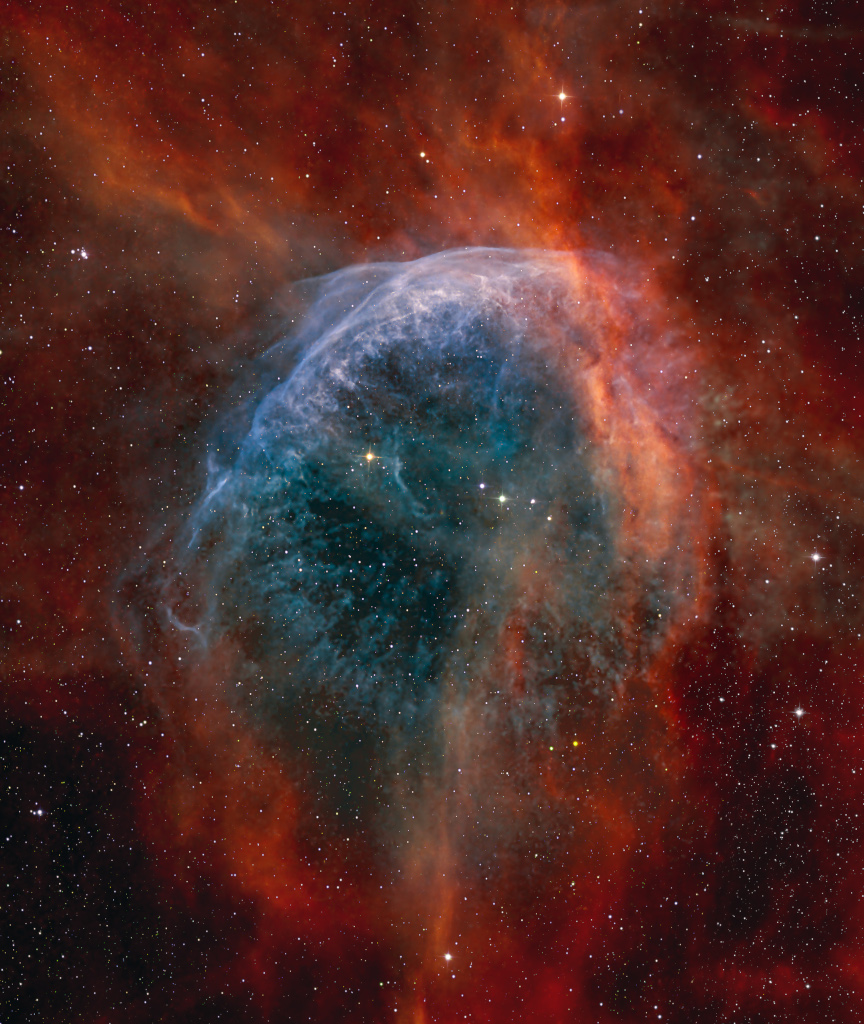2023年5月18日
WR 134 Ring Nebula
Image Credit & Copyright: Craig Stocks
Explanation: Made with narrowband filters, this cosmic snapshot covers a field of view about the size of the full Moon within the boundaries of the constellation Cygnus. It highlights the bright edge of a ring-like nebula traced by the glow of ionized sulfur, hydrogen, and oxygen gas. Embedded in the region’s interstellar clouds of gas and dust, the complex, glowing arcs are sections of bubbles or shells of material swept up by the wind from Wolf-Rayet star WR 134, brightest star near the center of the frame. Distance estimates put WR 134 about 6,000 light-years away, making the frame over 50 light-years across. Shedding their outer envelopes in powerful stellar winds, massive Wolf-Rayet stars have burned through their nuclear fuel at a prodigious rate and end this final phase of massive star evolution in a spectacular supernova explosion. The stellar winds and final supernovae enrich the interstellar material with heavy elements to be incorporated in future generations of stars.
Tomorrow’s picture: curly spiral galaxy
WR 134周围的环状星云
影像提供与版权: Craig Stocks
说明: 这幅透过窄波段滤镜拍摄的宇宙快照,涵盖了天鹅座内一片大约满月大小的天区。影像则突显因为电离硫、氢和氧气发光,而现踪的一个环状星云之明亮前缘。这圈镶在周遭星际气体和尘埃云气里的繁复光弧,是受到位于影像中心附近的明亮沃尔夫-拉叶星WR 134 之恒星风吹拂,因而堆积出的气泡(或称物质壳)之一部份。WR 134的估计距离约为6,000光年,因此影像涵盖了超过50光年宽的区域。用强烈的恒星风抛出外层气谷的大质量沃尔夫-拉叶星,更以极高的速率消耗它的核燃料,并会以壮观的超新星爆炸结束其恒星演化的最终阶段。这类恒星的恒星风及最后的超新星爆炸,为星际物质注入许多重元素,成为未来世代恒星的造星材料。
明日的图片: curly spiral galaxy







